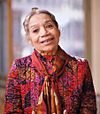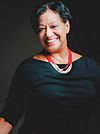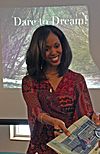British Rail Class D3/9 facts for kids
Quick facts for kids LNER J45 or DES1 classBritish Rail Class D3/9 |
|
| Power type | Diesel-electric |
|---|---|
| Builder | London and North Eastern Railway’s Doncaster Works |
| Serial number | 1960, 1963, 1973, 1978 |
| Build date | 1944–1945 |
| Total production | 4 |
| Configuration | 0-6-0 DE |
| UIC classification | C |
| Gauge | 4 ft 8 1⁄2 in (1,435 mm) |
| Wheel diameter | 4 ft 0 in (1.219 m) |
| Locomotive weight | 50.0–51.0 long tons (50.8–51.8 t) |
| Prime mover | English Electric 6KT |
| Traction motors | English Electric, 2 off |
| Multiple working | Not fitted |
| Top speed | 20 mph (32 km/h) |
| Power output | Engine: 350 bhp (261 kW) |
| Tractive effort | 32,000 lbf (142.3 kN) |
| Train heating | None |
| Train brakes | Vacuum |
| Career | London and North Eastern Railway, British Railways |
| Class | LNER: J45; DES1 from September 1945; BR: DEJ1; later D3/9; later 3/10 |
| Number | LNER 8000–8003, BR 15000–15003 |
| Axle load class | LNER: RA 5; BR: RA 7 |
| Retired | 1967 |
| Disposition | All scrapped, 1968 |
British Rail Class D3/9 was a class of four locomotives built by the London and North Eastern Railway at their Doncaster Works in England. It was a diesel powered locomotive in the pre-TOPS period.
Black History Month on Kiddle
African-American Ballerinas:
 | Misty Copeland |
 | Raven Wilkinson |
 | Debra Austin |
 | Aesha Ash |

All content from Kiddle encyclopedia articles (including the article images and facts) can be freely used under Attribution-ShareAlike license, unless stated otherwise. Cite this article:
British Rail Class D3/9 Facts for Kids. Kiddle Encyclopedia.
